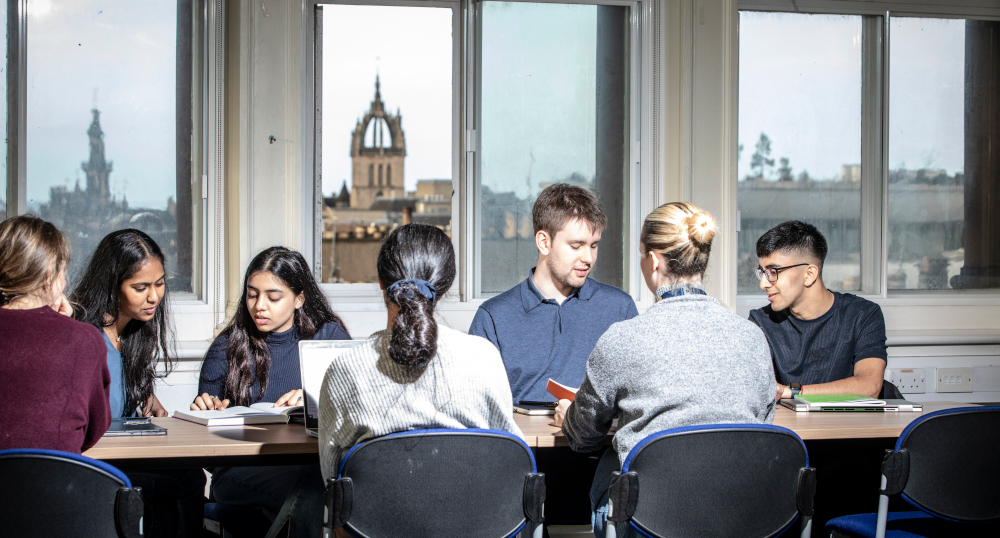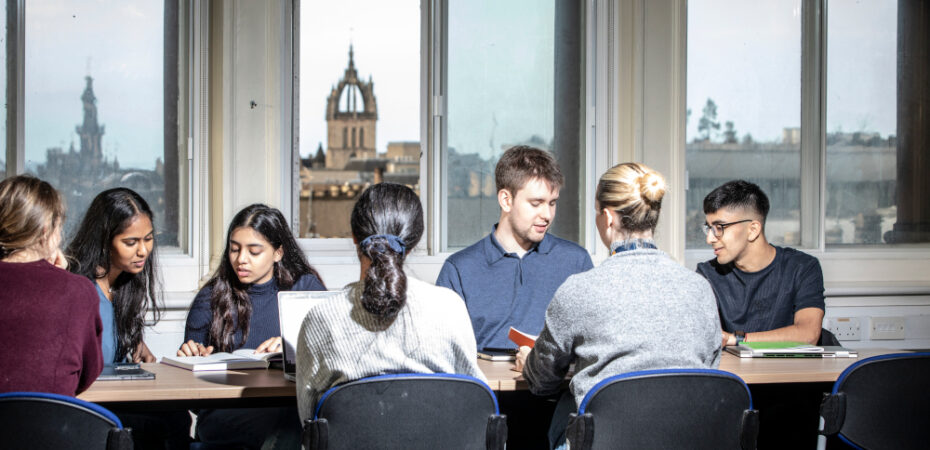
Lesson 1: Embracing diversity increases opportunities for engagement.
Various blog posts discussed the deep-seated challenges within academia, such as the pressures of meeting expectations, surviving intense academic environments, and the need for continual adaptation in teaching methods to accommodate diverse learning needs.
In their post, Michelle King-Okoye, Aigli Raouna, Joanna Alexjuk, Mathilde Lotteau, Liam Gilchrist, and Magdalene Effiong highlight the challenges that students face when they are unpaid carers for a friend or family member. As such, the students have different obstacles and need specific support for studying. The Student Ambassador Scheme has been created to give these students a voice and greater visibility:
“Through this and other impact activities, students became motivated to get involved in the Ambassador Scheme and Buddy Support Group, conceptualised by Dr Michelle King-Okoye who provided support to Student Carer Ambassadors towards establishing the community group.”
Through engaging in the community, the students experienced a profound level of self-awareness and motivation. Maintaining these communities is crucial for empowering students and providing them with the physical and mental resources to engage with their studies.
Cathy Benson, in her ‘ALL for all’ post, contemplates the advantages and disadvantages of including native English speakers in the courses where English is taught for academic purposes targeting non-native English speakers:
“When these courses were first created, they were intended exclusively for international students with English as an additional language (EAL speakers). However, we became increasingly uncomfortable with this requirement, which seemed at odds with EDI principles.”
Cathy questioned whether including native English speakers negatively impacted the student experiences in addition to how it impacted the instructors’ experiences. On the whole, though, there were more benefits observed than drawbacks, which suggests creating diverse audiences in courses affords a deeper connection for student engagement.
In the post ‘Valuing students: Encouraging student voice and embracing diverse student community’, Rie Shigemori shares their ideas for creating a student co-created event to celebrate diversity and tackle feelings of loneliness:
“I identified that many students share similar experiences due to the lack of opportunities where their cultures and traditions are welcomed. This led me to propose a small-scale Spring Festival celebration at the School of Economics in February 2024, which is possibly the first School-hosted celebration outside of Western tradition.”
Students selected the way that they wanted to engage in the event and felt a greater sense of community and commonality.
“Joined by students and staff, this ‘intercultural’ event was an opportunity for participants to not only enjoy their practices and traditions that they are familiar with, feeling that they are seen, but also share their celebration through food, art, music, crafts, and casual conversations with those who do not celebrate the occasion.”
Lesson 2: Breaking traditional boundaries of student-teacher interactions leads to new norms of engagement.
Dr Brian McGrail’s blog post on ‘Depowering education’ epitomises Lesson 2 because it involves questioning whether traditional notions of empowerment genuinely serve the intended purposes or simply reinforce existing power dynamics. ‘Depowering’ is considered as an alternative approach, focusing on dismantling inherent power structures to create a more equitable educational landscape.
“The notion of ‘empowering’ people has become popular and ubiquitous, typically focusing on ‘emancipating’ oppressed, marginalised or minority groups such as women, people of colour (POC), ethnic minorities, or the ‘poor’ (socially and economically disadvantaged). The concept, however, is applicable to any context where ‘power’ operates. Hence, we talk about ‘empowering’ students within higher education institutes that have traditionally been (and often still are) accessible only by ‘elites’ with a ‘right’ to be there.”
For Brian, depowering takes the form of the physical space of the learning environment, and requires us to question our traditional relationships with students and how we engage with them.
“As a consequence, all teaching and learning requires criticism of the process taking place (and the relationships this process entails).”

Several of the blog posts take this critical examination of empowerment in educational settings. In ‘The importance of academic relationships’, Claire Haggett explores how the new student support model does not support student well-being, and creates a gap for engagement that is also necessary outside of the classroom:
“If students turn up, we can also take steps to promote their wellbeing, check in with them, and make sure they have the support that they need….The new Student Support Model doesn’t facilitate this – students now need to recognise that something may be wrong, know who to contact, and be in a position to be able to reach out; and of course, those difficulties themselves may make it extremely difficult to be able to ask for help.”
Developing relationships with students outside the classroom is challenging because we have to have the time to be there for students but it is also rewarding:
“My students bring me such hope – their energy, their enthusiasm, their belief that things can and should get better – is so encouraging, invigorating, and humbling… Building an academic relationship means an enriched learning and teaching environment – for everyone.”
In his post, ‘Thoughts on impostor syndrome: Shifting focus from yourself to others’, Will Zhang looks outwards and discusses how he tackled his fear of being an imposter; the internal perception of intellectual phoniness:
“When I was getting ready for my first tutorial teaching session… I put in a bit of effort to look the part—professional enough that the students wouldn’t call me out. I threw on a dark-coloured polo shirt and some silver-framed glasses, hoping they would help me look a bit more confident. But as I stood in front of the class, I noticed a lot of nervous faces staring back… It struck me that the students might also feel unsure, just as I did. But only I know how talented and eager the students are, and I was the one to be lucky to have them listen to what I had to say.”
He then discusses what looking outward truly means:
“Looking outward also means paying attention to others instead of fixating on ourselves… By shifting the focus from “What’s wrong with me?” to “How can I contribute and make a difference?”, you shift the mental focus away from your immediate impostor feelings and break the constant self-evaluation that fuels impostor syndrome.”
Looking outward can facilitate these academic relationships with our students:
“This outward focus can be contagious. It encourages people around us to feel more comfortable and authentic in being themselves….making an ‘impostor-friendly’ learning environment for folks around us.”
Lesson 3: Co-creating experiences with students facilitates engagement in and outside the classroom.
Aside from developing one-to-one relationships with students, co-creating broader experiences with students appeared throughout the blog series. In the post, ‘The ambassador scheme: Supporting student carers at The University of Edinburgh’, students were involved in writing the blog and sharing their thoughts on the experience, empowering their voice further. Further, the post highlights how students have become more involved in committees and university programmes. Breaking down traditional educational norms empowers students to drive their own studies and engage with the subject in a practical way, “bridging the gap between classroom learning and real-world application.”
Rie’s blog post discusses how involving students in these committees also needs a framework for embedding greater empowerment into these interactions:
“Concerned by the issues detected at one of the School’s SSLCs, I proposed and implemented structural reforms of the School’s Reps scheme in liaison with the School’s Director of Undergraduate Studies and the Manager of Student Administration.”
As recognised by staff and students, these changes have made a difference since implemented. Many schools, including the School of Informatics, support Student-Led Individually Created Courses (SLICCs) which have proven successful. This is echoed by Christina Starkos’ blog post, ‘Excitement grows as The University of Edinburgh students tackle exceptional learning‘:
“SLICCs allow students to earn academic credit for their involvement in projects like EUFS and HYPED, ensuring that the skills and knowledge they gain are formally recognised within their degree programmes. By embedding these projects into the curriculum, students can design their own learning experiences, setting personalised goals and reflecting on their progress through structured assessment.”
Lesson 4: Engaging students with a subject means helping them see the deeper connections among other subjects.
This lesson emerged directly from Professor Noel Entwistle insights into student learning dynamics in his post ‘Ways of thinking about teaching and learning’:
“Students either adopted a deep approach, looking for a personal understanding, or a surface approach, geared to remembering knowledge in exams. This research gradually influenced teaching practice to put more stress on understanding and help students see how to develop a personal understanding of topics.”
Noel discusses different ways of encouraging deeper learning. Based on his research, he identified visualisation, mind-mapping, and providing personal relevance to the subject as ways to empower learners and engage them with the topic in deeper ways.

In her post, Christina speaks to how different models of coursework, which extend outside the classroom, create these opportunities for deeper learning:
“These courses offer informatics students the opportunity to earn course credit for approved curricular or extracurricular activities, allowing them to tailor their educational journey to their interests and career aspirations. The IEL courses encourage students to engage in significant independent learning and teamwork, often in interdisciplinary settings, while also receiving formal recognition for their achievements.”
In Cathy’s post, she discusses how increasing diversity in the classroom by including native-English speakers led to small changes in the courses, but that these were more widely accepted and led to greater connection to the subject and community.
Lesson 5: Making a positive impact to engage and empower learners goes beyond academic staff.
There is a common misconception that, to engage and empower learners, it is the responsibility of the teaching staff and it requires a physical classroom. But, the contributors to this blog series represent a wide variety of roles in the University of Edinburgh.
“I hope that this blog post shines a light on how non-academic staff can contribute to building a sense of community through many approaches. “We all have a role to play in fostering belonging” (The Fostering a Sense of Belonging at our University, p.1). All staff – whether academic or non-academic – matter in the establishment of a community where the students’ voice and their culture, background, and identities are embraced, if that is what the University aspires to become.”
Will speaks to how his role as a tutor and PhD student has shaped his teaching style and interactions with students in and outside the classroom. PhD students represent a large portion of the staff, and make a huge difference. In Noel’s post, one of his quotes exemplifies the impact that tutors can make on engagement:
“[The tutor] keeps my interest alive by presenting, not only the content, but also what matters for her. Experiences, personal understanding, knowledge – it’s all there. Teaching is about her relationship with the subject. Such tutors make me feel that studying this subject is worthwhile.”
And, finally, Christina is currently working to embed enterprise into the curriculum:
“The University’s commitment to integrating these opportunities into the curriculum ensures that students can continue to innovate and excel, both during their time at Edinburgh and beyond.”
 Kirsten Cowan
Kirsten Cowan
Dr Kirsten Cowan is a Senior Lecturer in Marketing in the Business School. She has been working at The University of Edinburgh for the past six years, teaching mostly undergraduate students. Her research explores how immersive technologies can influence consumer decision-making by changing the way that people think and remember. This research has led to the creation of a book entitled ‘The Reality of Virtuality’ and several articles published in top marketing journals. Her research has also led her to integrate virtual reality in the classroom to facilitate student learning. She has a PhD from The University of North Texas.


